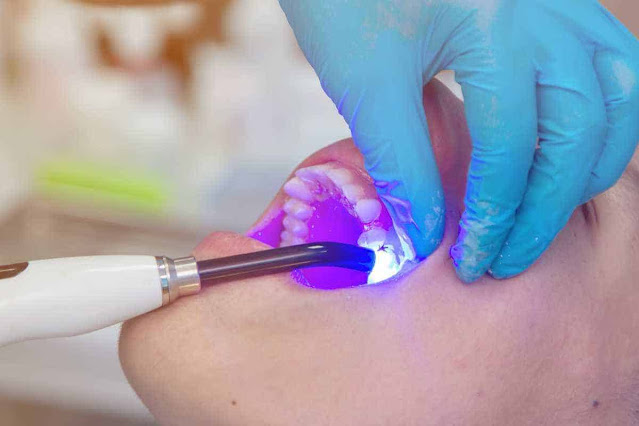 |
| Dental Polymerization Lamps |
Since their inception, polymerization lamps have played a crucial role in
modern dental procedures involving composites and bonding agents. These
specialized lamps help accelerate the curing or hardening process of
light-activated dental materials through the emission of specific wavelengths
of light energy. Without polymerization lamps, dental fillings, sealants,
impressions and other restorative procedures would simply not be possible. In
this article, we explore the various types of dental polymerization lamps, their
functions, some key technical specifications and how evolving lamp technologies
are enhancing dental treatments.
Types of Dental Polymerization Lamps
There are a few main types of dental polymerization lamps currently in use by
dentists:
LED Lamps
Light emitting diode or LED lamps have become increasingly popular in recent
years. LED lamps offer several advantages over previous lamp technologies. They
emit light in specific wavelengths optimal for composite curing between 400-500
nm. LEDs have a longer lifespan than halogen bulbs and do not get as hot,
reducing the risk of heat damage to tooth structures. LEDs are also more energy
efficient.
Halogen Lamps
Traditional halogen lamps were the standard for many years. They provide broad
spectrum light and effective curing, but run much hotter than LED lamps.
However, they require filter systems to ensure the correct curing wavelengths
are emitted. Advances have improved their focus and cooling capabilities.
Plasma Arc Lamps
Rarer plasma arc lamps produce exceptional light intensity through an electric
arc. They deliver higher power density over a small area and are often used for
Large cavity restorations where more energy is required. However, their high
costs and complexities make them less common than LED or halogen lamps.
Specifications of Dental Polymerization Lamps
When selecting a Dental
Polymerization Lamps, dentists consider several key technical
specifications:
Light Intensity: Measured in milliwatts per square centimeter (mW/cm2), higher
intensities ensure materials fully cure. Most modern lamps deliver a minimum of
500mW/cm2.
Wavelength: As noted above, the optimal curing range is 400-500 nm blue light
spectrum. Lamps must emit these specific frequencies.
Coverage Area: The illuminated area should match the size of dental procedures.
Most provide 4-10 square centimeter coverage.
Timer: Lamps include timing functions to ensure materials receive proper light
exposure durations. Standard times are 10-40 seconds.
Cooling: Efficient cooling prevents lamps from overheating, prolonging lifespan
and protecting tooth structures.
Advances in Polymerization Lamp Technologies
Continued enhancements are expanding the capabilities of dental lamps:
Multi-wavelength LEDs: New LED designs emit light across the polymerization
spectrum for improved curing.
Increased intensities: Higher powered lamps of 1000+ mW/cm2 can solidify very
large or deep restorations faster.
Smart connectivity: Advanced models connect via Bluetooth to practice
management software for record-keeping.
Curing validation: Built-in sensors verify light intensities were sufficient
after each use. This ensures treatment success.
Portability: Handheld LED lamps allow curing inside the mouth or in difficult
access areas traditionally not possible.
Safety enhancements: Interlock functions prevent accidental light exposure and
overheating risks.
Bluephase Luminous Curing Unit: An innovative new tool delivers polywave LED
light through a portable pen-like device for on-the-go light curing applications.
The Future of Dental Polymerization Lamps
As composites, adhesives and other light-cured dental biomaterials continue to
evolve, so too will the polymerization technologies used to set them. Experts
anticipate new materials engineered for even shorter curing times. Lamp
technologies will parallel these advances through higher power outputs,
advanced multi-spectral light delivery and real-time treatment monitoring.
Wireless connectivity between lamps, practice management data and portable
delivery devices may one day standardize treatment documentation and quality
assurance. Overall, polymerization lamps will remain essential tools to
leverage the benefits of light-activated dental treatments – transforming
dentistry for both patients and practitioners worldwide.
While often overlooked as merely a supplementary component, polymerization
lamps in fact sit at the very core of many dental procedures today. From
traditional halogen to innovative new LED and combination light technologies,
dental lamps continue driving improvements through their abilities to rapidly
cure tooth-colored materials, adhesives and impression resins. As advances in
dental biomaterials and practice management simultaneously progress, expect
polymerization technologies to similarly thrive - maintaining their
indispensable role in modern restorative and cosmetic dentistry.
Get More Insights On This Topic: Dental
Polymerization Lamps
Explore More Related Topic: Locomotive
Leasing
